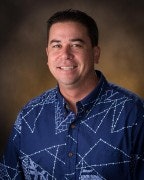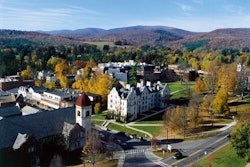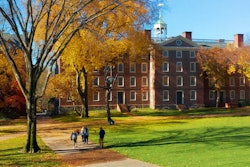At the University of Hawai’i at Mānoa (UH Mānoa), Native Hawaiian students make up roughly 15% of the undergraduate student population. The school is one of only 21 institutions that qualifies for federally designated funding as an Alaskan Native, Native Hawaiian serving institution.
 Dr. Willy Kauai, director of Native Hawaiian student services at UH Mānoa.
Dr. Willy Kauai, director of Native Hawaiian student services at UH Mānoa.
“There’s a different kind of culture and opportunities that exist now from pre-K through grade 12 that has created the conditions for Native Hawaiians to now access higher education in higher numbers than we’ve ever seen historically,” said Kauai. “That’s very much a result of community awareness, but also faculty and student advocacy to say, ‘Hey, Native Hawaiians are underrepresented across the higher education playing field.’”
While Native Hawaiians are underrepresented in higher education, they are overrepresented in poverty, houselessness, workforce and health disparities, said Kauai. According to a 2020 report from Asian and Pacific Islander Americans (APIA) Scholars, an organization working to support Asian American and Pacific Islander (AAPI) student success, 50% of Native Hawaiian students leave college without receiving a degree or certificate. Fifty-three percent of Native Hawaiians have not enrolled in any kind of postsecondary education.
The Native Hawaiian diaspora has grown, partially in response to the growing social and economic challenges in the archipelago. More Native Hawaiians now live outside of Hawaii than on the islands themselves, the vast majority located on the U.S. mainland. Without full disaggregation of student population data, the stories, history, and culture of Native Hawaiian students, faculty, and staff can often go unseen in higher education.
“The way populations have identified here has changed over the years. I can remember when we were lumped into Asian, Pacific Islander,” said Dr. Jonathan Kay Kamakawiwoʻole Osorio, dean of Hawaiʻinuiākea School of Hawaiian Knowledge at UH Mānoa. Often, Native Hawaiians are grouped into the catch-all racial category: other.
“It seems as though it changes back and forth depending on which agency it is that’s doing the collection of the data,” said Osorio.





















